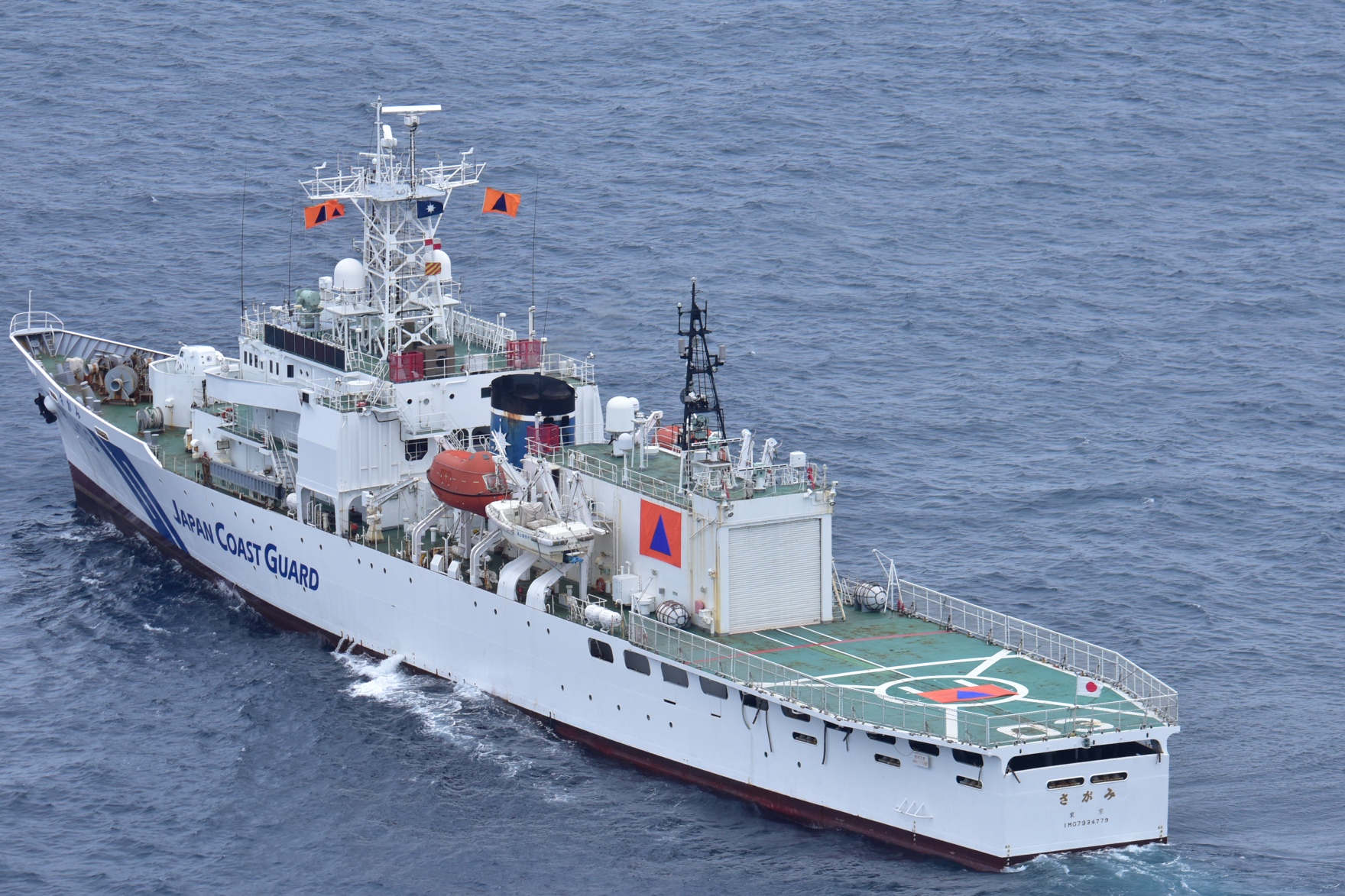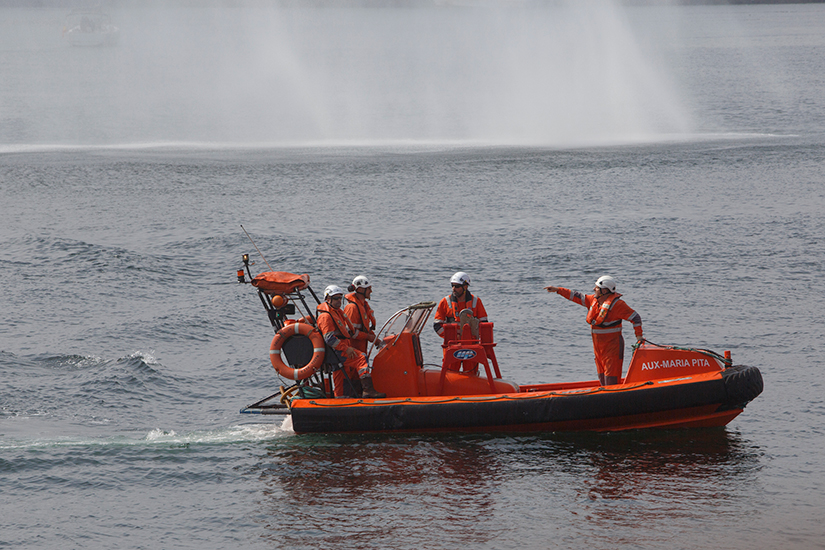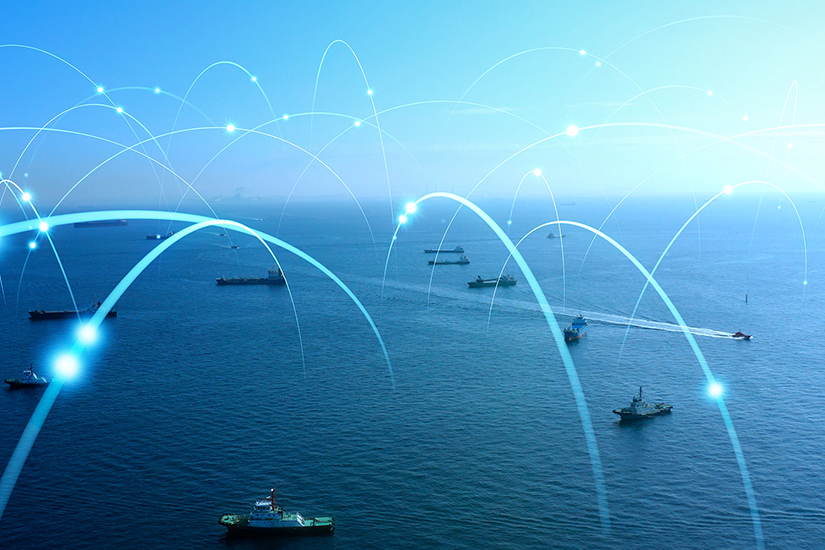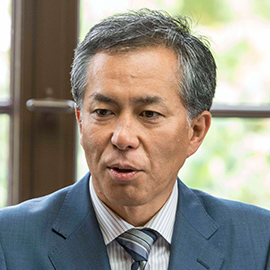Introduction
The overview of the guideline for the Minister of Defense to take control of the Japan Coast Guard when there is a contingency in Japan, known as the “Control Guideline,” was unveiled in April 2023.[1] The first tabletop exercise took place at the end of May, followed by a practical exercise which was carried out in the east of Izu Oshima Island on June 22.[2] While the authority of the Minister of Defense to instruct the Japan Coast Guard has been established since the enactment of the Self-Defense Forces Law in 1954,[3] specific control guidelines have never been formulated over the past seven decades. This paper provides an overview of the control guideline, delves into the contextual background behind the formulation, and outlines concerns faced by the Japanese government.

The cooperative framework between the Self-Defense Forces and the Japan Coast Guard and Control by the Minister of Defense
The Self-Defense Forces Act, Article 101 provides that the Self-Defense Forces and the Japan Coast Guard shall maintain close cooperation even at times of peace and that the Minister of Defense may request the cooperation of the Japan Coast Guard when circumstances deem it particularly vital for the execution of the Self-Defense Forces' missions. The Japan Coast Guard Act also provides cooperation, mutual assistance, and communication with the relevant government ministries and agencies as a service in Article 2 and Article 5, Paragraph 19. Based upon this legal framework, the Japan Coast Guard and the Japan Maritime Self-Defense Force have not only closely coordinated their efforts in areas such as maritime search and rescue and disaster relief but have also bolstered their cooperation in response to incidents such as the spy boat incidents in 1999 and 2001 and the measures against piracy off the coast of Somalia.
On the other hand, in a situation such as the ordering of a defense operation or a public security operation when there is an armed attack against Japan, a different response is necessary. In order to maintain the legal order in the vast sea areas of Japan, in addition to the regular cooperative relationship, it is essential to effectively operate the assets of the Japan Maritime Self-Defense Force and the Japan Coast Guard, such as vessels, aircraft, and others, based on the information consolidated within the Ministry of Defense. Therefore, the Self-Defense Forces Act, Article 80 provides that the Minister of Defense shall control all or a part of the Japan Coast Guard when the Prime Minister finds a special necessity in the case of a defense operation in the situation of an external armed attack against Japan[4] or in the case that a public security operation has been ordered based on the order in Article 78, Paragraph 1 of the Act.[5] In other words, the purpose of the control of the Japan Coast Guard is to maintain the security of the vast sea areas of Japan with limited assets of the Self-Defense Forces and the Japan Coast Guard and operate organically with each other based on the centralized command of the Minister of Defense, through consolidated information about the situation in the operational sea areas.
Note that even in the case that the Minister of Defense has control over the Japan Coast Guard, the Japan Coast Guard is not incorporated into the Self-Defense Forces. Control by the Minister of Defense does not mean that the Minister of Defense directly commands the vessels, aircraft, and other assets of the Japan Coast Guard; it means that the Minister of Defense controls the Commandant of the Japan Coast Guard.[6] In other words, the existing framework will be maintained, where the Commander of the Japan Coast Guard continues to oversee the operational command and control of patrol vessels and aircraft on the scene. Furthermore, even under the control of the Minister of Defense, there are no additions of military missions such as combat operations or modifications of the missions of the Japan Coast Guard. This fact has been confirmed in the statement of Director General of the Japan Defense Agency Norota in the House of Councillors Special Committee on the Guidelines for Japan-U.S. Defense Cooperation on May 11, 1999, and, echoed recently, in the statements of Minister of Defense Hamada in the House of Representatives Standing Committee on National Security on October 27, 2022, and Prime Minister Kishida in the House of Representatives Standing Committee on Budget on November 28 the same year, among others.[7]
Then, what are the specific missions of the Japan Coast Guard which are under control? In the recently issued materials, the following duties are enumerated as examples: 1) Evacuation and rescue of residents, 2) provision of information to ships and support for their evacuation, 3) search and rescue and life-saving, 4) vigilance against terrorism and other threats, at ports, 5) measures to respond to large numbers of evacuees.[8] While all these missions fall within the scope of the missions stipulated by the Japan Coast Guard Act, it is expected that the missions can be performed more safely than by the Japan Coast Guard implementing the missions independently by comprehensively analyzing information about the sea areas affected by the contingency consolidated by the Ministry of Defense in an emergency. On the other hand, the Self-Defense Forces can devote their assets to the defense operation and the public security operation. In particular, the Japan Maritime Self-Defense Force vessels used in the civil defense shall only be used for the purpose of civil defense under international law,[9] so they might hinder the efficient operation of the assets of the Japan Maritime Self-Defense Force. Therefore, clarifying the division of roles between each institution, namely the Self-Defense Forces are responsible for defense operations and the Japan Coast Guard is responsible for civil defense operations, makes it possible to realize each operation more effectively.

The background to the formulation of the Control Guideline
Why was the Control Guideline formulated at this time? Two reasons can be identified. Firstly, the changes in the security environment surrounding Japan can be cited. Three documents, including the new National Security Strategy of Japan, were stipulated in December 2022, and they pointed out the deterioration of the security environment surrounding Japan.[10] In particular, from September 2012 onwards, Chinese Coast Guard ships have been consistently present in the sea areas surrounding the Senkaku Islands almost all year round and repeatedly intruded into Japan’s territorial waters. Recently, they have been persistently approaching Japanese fishing boats engaged in fishing operations in Japanese territorial waters around the Senkaku Islands and engaging in acts of harassment. As a result, there is a trend toward prolonged intrusion by Chinese Coast Guard vessels in Japanese territorial waters, which is unacceptable within the Japanese sovereign territorial waters.[11] In the case that the situation escalates further, a seamless response by the Japan Coast Guard and the Self-Defense Forces will be required, so actual field exercises on the sea are also being implemented.[12]
Another important aspect that contributed to the formulation of the Guideline is the enhanced trust and collaboration between the Japan Coast Guard and the Self-Defense Forces.[13] Collaboration between the two organizations began in fields such as maritime search and rescue and communications, among others, and after reflection on the lessons learned from the spy boat incident in 1999, they prepared a joint operation manual and worked on strengthening collaboration, including the conducting of exercises based on the manual. Moreover, from 2009 coast guard officers began serving on JMSDF destroyers in order to exercise jurisdiction over piracy incidents off the coast of Somalia, through which the two institutions built a relationship complementing each other’s duties through the realization of joint operations.[14] Recently, they have further strengthened their collaboration, including information sharing in the sea areas surrounding Senkaku, the simultaneous sharing of information obtained with the SeaGuardian Remotely Piloted Aircraft operated by the Japan Coast Guard, and other forms of collaboration.
As a result of the strengthening of these forms of collaboration, complex and highly difficult operation has become possible. In the joint exercises implemented last year, in addition to exercises regarding search and rescue and responses to the spy boat incident, the so-called gray zone exercises were also implemented. In this way, a significant level of mutual trust has been fostered between the Japan Coast Guard, a civilian institution, and the Self-Defense Forces, establishing a foundation where both institutions can operate while respecting each other's functions even in the tense atmosphere of a crisis. These achievements are believed to contribute to the formulation of the Control Guideline. Moving forward, it is expected that exercises based on the formulated Control Guideline will be conducted, further strengthening collaboration between the two institutions.
In other words, the deterioration of the security environment and the accumulation of achievements in enhancing the coordination and confidence between the Japan Coast Guard and the Self-Defense Forces led to the formulation of the Control Guideline.

Issues and Future Tasks
As discussed above, the recent formulation of the Control Guideline is a timely and profoundly significant development. However, it is important to acknowledge that new challenges have arisen.
One such challenge is the need to appeal strongly to the international community about the fact that the Japan Coast Guard retains non-military services even in times of contingency. The recent Control Guideline reflects the government policy that even at times of conflict, the Japan Coast Guard shall retain a civilian status. On the other hand, there are countries, such as the United States, where coast guard organizations are a part of military services, or countries, such as the United Kingdom, where the navy performs maritime law enforcement functions. Therefore, in order to avoid confusion with such organizations, it is essential for the Japanese government to explain to the international community the fact that the Japan Coast Guard retains a civilian status even at times of armed conflict, particularly emphasizing that patrol vessels displaying the internationally distinctive sign are engaged in civil protection operations, aiming to reduce the potential for them to be perceived as a military target. Now that the formulation of the Control Guideline has been achieved, the next step would be to address these challenges.
(2023/08/18)
Notes
- 1 “Control Guideline of the Japan Coast Guard,” April 28, 2023, Cabinet Secretariat (Situations Response and Crisis Management), National Security Secretariat, Ministry of Foreign Affairs, Japan Coast Guard, Ministry of Defense.
- 2 “Ministry of Defense and Japan Coast Guard: Ministry of Defense and Japan Coast Guard Carry Out Tabletop Exercise, the First under the Control Guideline, Confirm Collaboration under an Armed Attack Scenario,” Mainichi Shimbun, June 1, 2023; “Japan Maritime Self-Defense Force and Japan Coast Guard Actual Field Exercise under Control Guideline Scenario, Verifying the Special Symbol Indicating Involvement in the Protection of Citizens,” Sankei Shimbun, June 23, 2023.
- 3 Until the Ministry of Defense was established in 2007, it was provided that the Director General of the Japan Defense Agency would take control.
- 4 Self-Defense Forces Act, Article 76, Paragraph 1, item 1. Note that control of the Japan Coast Guard is not provided for in the survival-threatening situation in item 2 of that paragraph.
- 5 Note that the case of a security operation is not included in the recent Control Guideline.
- 6 Order for Enforcement of the Self-Defense Forces Act, Article 103.
- 7 145th Session of the Diet, Special Committee on the Guidelines for Japan-U.S. Defense Cooperation, Record of the Proceedings No. 4, May 11, 1999, p. 38; 210th Session of the Diet, House of Representatives Standing Committee on National Security, Record of the Proceedings No. 3, October 27, 2022.
- 8 Refer to Note 1.
- 9 The Protocols Additional to the Geneva Conventions define civil defense in Article 61 a) and then in Article 67, paragraph 1 provide that “Members of the armed forces and military units assigned to civil defence organizations shall be respected and protected, provided that:” and provide for the condition that “a) such personnel and such units are permanently assigned and exclusively devoted to the performance of any of the tasks mentioned in Article 61.”
- 10 The National Security Strategy of Japan, the National Defense Strategy, and the Defense Buildup Program were stipulated on December 16, 2022. Cabinet Secretariat, “About the National Security Strategy of Japan.”
- 11 Kentaro Furuya, “Further Attempts by China to Change the Status Quo in the East China Sea – The Response Which Japan Should Consider to Incidents in Which Chinese Government Vessels Follow Japanese Fishing Boats,” International Information Network Analysis (IINA), October 20, 2020.
- 12 “About the Implementation of Joint Exercises with the Japan Maritime Self-Defense Force,” Japan Coast Guard, December 23, 2021.
- 13 Kentaro Furuya, “Ten Years of Confrontation with China Coast Guard Vessels: The Need to Strengthen Collaboration between the Japan Coast Guard and the Self-Defense Forces,” International Information Network Analysis (IINA), January 17, 2023.
- 14 Junji Okuzono, “Changes in the Relationship between the Japan Coast Guard and the Japan Maritime Self-Defense Force and Measures against Piracy” in Studies on the Japanese Act on Punishment of and Measures Against Piracy edited by Jun Tsuruta, Yushindo, 2016, pp. 177-191.

